Awesome Red Betta Fish Breeding Tips
Red betta fish are like little gems swimming around in the aquarium! These stunning fish have vibrant red scales that are sure to catch anyone’s eye.
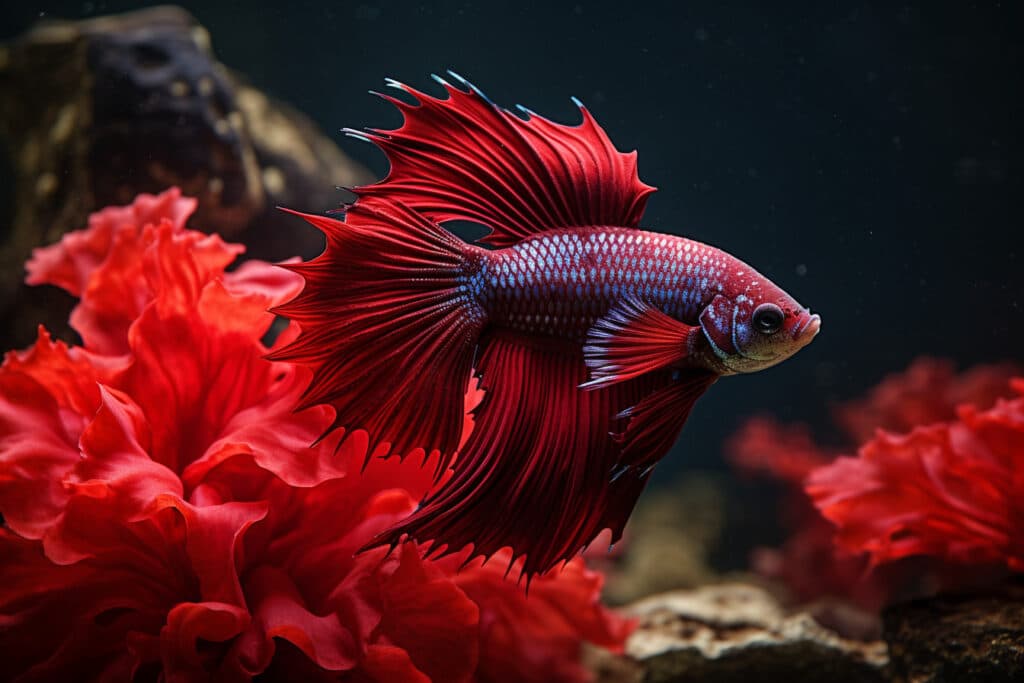
Bettas are known for their feisty personalities and their tendency to flare their fins when feeling threatened or territorial. But don’t worry, as long as you provide them with a comfortable and spacious aquarium, they’ll be happy and healthy!
in this blog post, we will cover the differences between the betta genders, the basics of how to breed a red betta pair, the perfect tank size for them to thrive, and some other cool things around our red little pal.
Table of Contents 🦑
Red Siamese Fighting Fish
Let’s start from the beginning, The Betta Fish (Betta splendens) also known as the beloved Siamese Fighting Fish, are native to Southeast Asia, specifically in Thailand, Cambodia, Malaysia, and Vietnam where they live in warm, still, and shallow water like rice paddies, where they have plenty of hiding places among vegetation and debris. In the wild, they are known to feed on insects, small crustaceans, and larvae.
Red Male and Female Betta Splendens
When it comes to the differences between red male betta fish and red female betta fish, there are a few things to keep in mind. First and foremost, it’s important to note that both males and females belong to the same species, Betta splendens. However, some key differences between the two sexes set them apart.
One of the most notable differences between the two genders is their fins. Males tend to have longer fins, while females have shorter and more blunt fins. This is because male bettas use their big flowing fins to attract potential mates and show off their vibrant colors.
Another difference between red male and female betta fish is their coloration and overall appearance. Male bettas are known for their vibrant colors and striking patterns, while females tend to have a more subdued and less colorful appearance. This is because male bettas use their bright shades to attract females and intimidate other males. Female bettas, on the other hand, don’t need bright colors to find a mate and tend to focus more on finding a safe place to lay their eggs.
Both genders of bettas can make fantastic pets for any aquarium enthusiast. However, it’s essential to keep in mind the differences between the sexes when deciding which one to take home.
If you’re interested in a betta with striking, flowing fins and bold colors, a male betta is a great choice. With their longer, more elaborate fins and brighter hues, male bettas are sure to make a statement in any aquarium.
Alternatively, if you prefer a betta with a more understated appearance, a female may be the way to go. Although they may not have the same long, flowing fins as males, they can still display beautiful shades and patterns.
Ultimately, each one of them has its unique characteristics and can bring a lot of charm and personality to your aquarium.
Breeding Red Betta Fish
Breeding red betta fish can be a rewarding experience for any fish enthusiast.
To start the process, you’ll need to pair a male and female betta fish in separate aquariums. It’s important to condition the pair beforehand by feeding them high-quality food and gradually increasing the water temperature.
When the red male is ready to breed, he’ll start building a bubble nest at the top of the aquarium. The red female should be introduced to the male’s aquarium when she shows vertical stripes on her body, indicating that she’s ready to mate. Once they’re both in the aquarium, the male will start displaying courtship behavior, flaring his fins and dancing around the female.
After they’ve mated, the female will release her eggs and the male will fertilize them. The male will then scoop the eggs into the bubble nest and guard them until they hatch.
It’s important to remove the female from the aquarium at this point to prevent her from eating the eggs. With proper care, they will hatch in a few days and you might have a full or part-red juvenile. betta frys can be fed with special fry food.
Breeding red betta fish can be a fun and exciting experience, but it’s important to do your research and ensure that you’re providing the best care possible for your fish.
Bigger Tank, Happier Betta.
When it comes to red betta fish tank size, it’s important to give your fish enough space to swim and breathe air from the surface.
Bettas are unique among fish in that they have a special organ, called a labyrinth, that allows them to breathe air directly from the surface. For this reason, it’s important to make sure that the water in your tank isn’t too deep, and that there’s plenty of space for your betta to swim up to the surface to take a breath.
As a general rule, a single betta fish should be kept in a tank that’s at least 5 gallons in size. This gives them plenty of room to swim and explore their environment.
If you’re planning to breed your bettas or keep more than one betta, you’ll need to go even bigger. A community tank should be at least 20 gallons in size to give your fish enough space to swim establish their territories and mate.
Add Live Plants for Your Red Betta
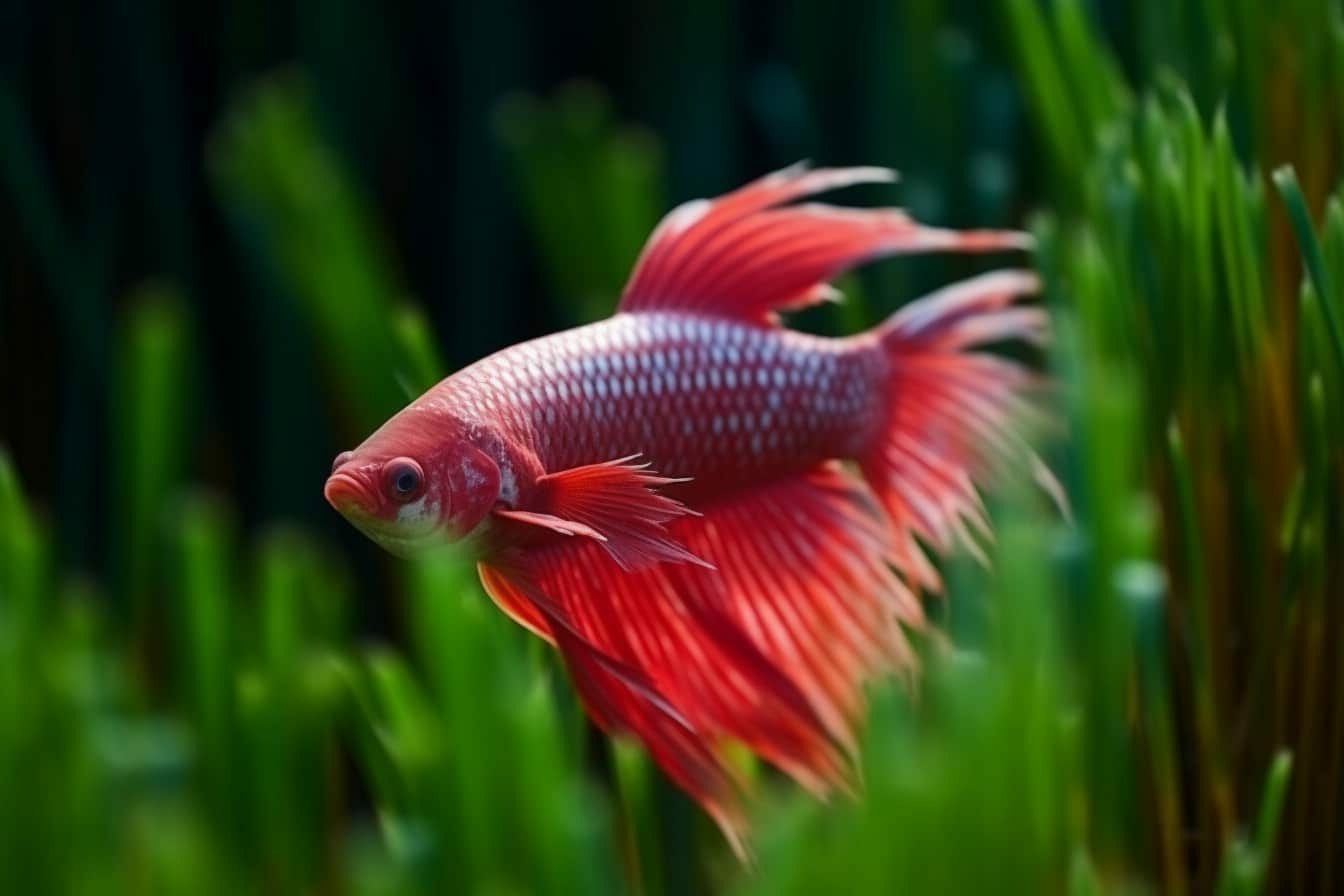
Live plants are not only aesthetically pleasing but also beneficial for red betta fish. They provide a natural environment that mimics the betta’s natural habitat and offers a place for the fish to hide, rest, and explore. Live plants also help to maintain water quality by absorbing excess nutrients and waste, preventing the growth of harmful bacteria, and oxygenating the water. Additionally, they encourage the growth of beneficial microorganisms that contribute to a healthy ecosystem.
Some popular live plant options for red betta fish include java fern, anubias, amazon sword, moss, and Indian Almond leaves. Adding them to your betta fish tank can enhance the health and well-being of your fish, encourage the male betta to create a bubble nest for the breeding process, and create a beautiful and natural underwater world for them to thrive.
Final thoughts
This blog post has explored the fascinating world of breeding red betta fish, from flirting to fry. With proper care and preparation, successful mating can be achieved, providing plenty of joy and entertainment for any fish enthusiast.
It is important to keep in mind that bettas need enough space to swim and breathe air from the surface, and adding live plants to the tank can offer additional benefits for betta health. Whether you’re a novice or an experienced fish keeper, breeding red bettas can be a rewarding and fulfilling experience.
With patience and dedication, you’ll soon have your very own school of beautiful red bettas swimming in your aquarium! Hope you enjoyed this article! Happy breeding!
Related Blog Posts:
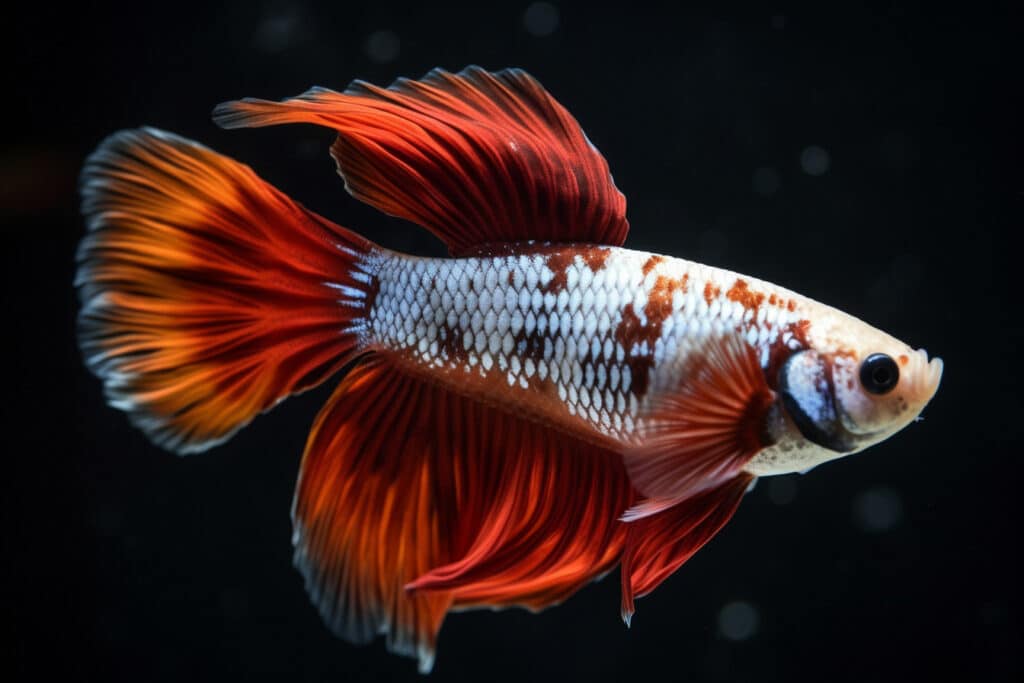
Koi Betta Fish Nature’s Aquatic Wonder Unveiled
Koi Betta Fish Nature’s Aquatic Wonder Unveiled Get ready to dive into a blog post
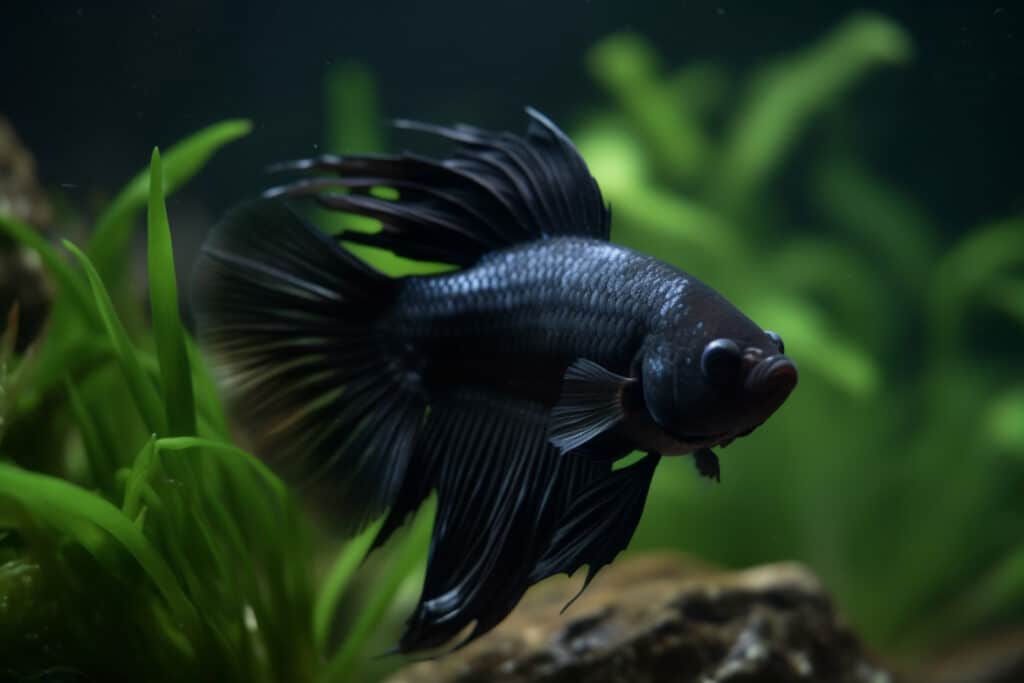
Black Betta Fish
Swim To 🤿 Home The Magic of Black Betta Fish Beauty and Care The aquatic
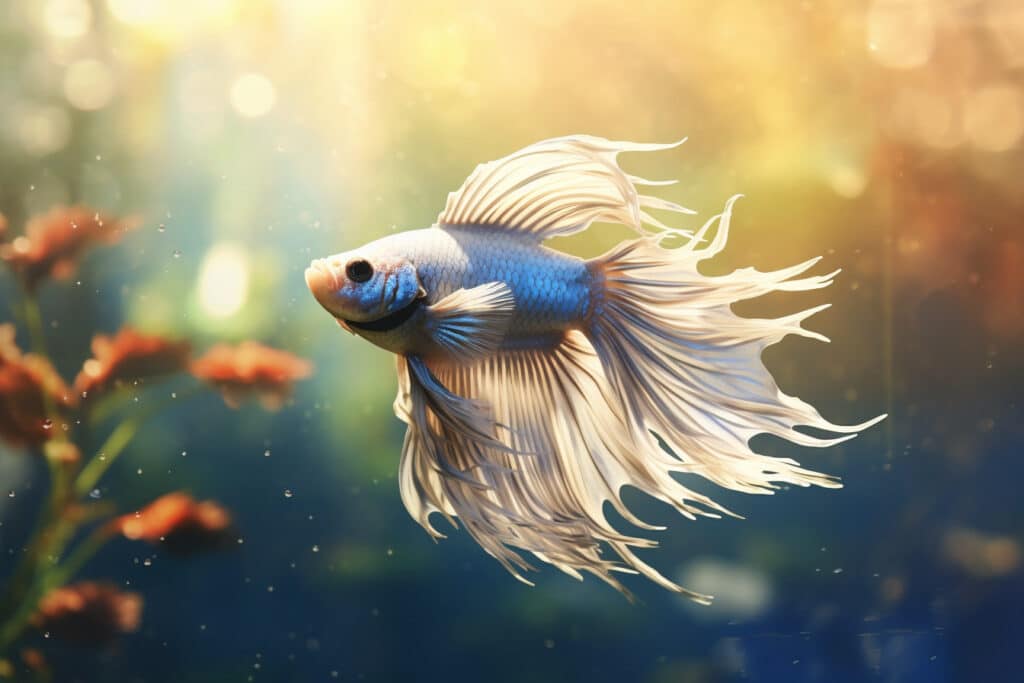
White Betta Fish
Unveiling The Mysteries of Pure White Betta Fish Have you ever heard of a fish
